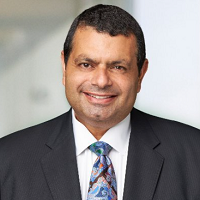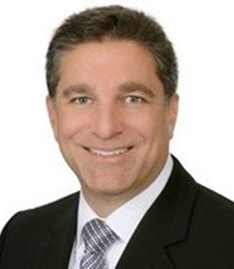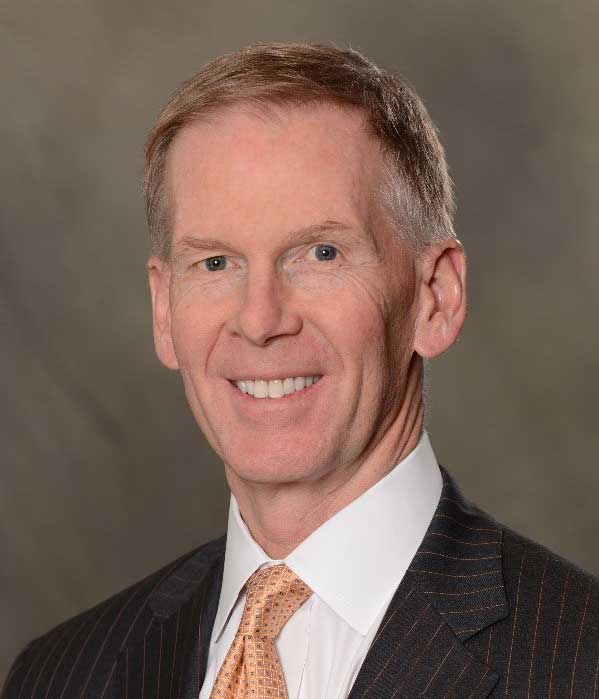HFMA strategy session highlights challenges and opportunities for healthcare finance leaders: payer relations, supply costs, AI and more
Providers must adapt to a landscape in which payers and industry entrants are carving out an expanding share of the care delivery market.
The legacy healthcare provider’s position in the industry could grow tenuous if leaders don’t respond boldly and strategically to ongoing trends, according to insights recently presented to HFMA leaders.
“We’re at a crossroads right now,” Ashraf Shehata, principal and U.S. national sector leader for healthcare and life sciences with KPMG, said in November during a discussion at KPMG’s Ignition Center in Chicago.
In serving finance professionals, HFMA should work to “bring tools to the table to help assess and evaluate the different options as we’re at this crossroads,” Shehata said.
Members of the HFMA Board of Directors and leadership team joined the KPMG Ignition team for a session focused on exploring emerging trends and technologies and the potential impacts on HFMA and its members in the context of a future-state vision.
The session included a conversation featuring Shehata and conducted by Marc Scher, FHFMA, CPA, a former partner with KPMG and Chair-Elect of HFMA’s Board. Here’s a look at some of the most provocative takeaways.
1. A wary eye on payers
Payer relations constitute one of the most vexing ongoing issues for health system finance leaders, Shehata said. The concerns have become more urgent as Medicare Advantage (MA) plans gain a bigger share of the insurance market for seniors.
“Some organizations are being very selective around how they negotiate, and they’re even dropping coverage for certain Medicare Advantage carriers because they can’t obtain sustainable contract rates,” Shehata said.
More health systems also are branching into the payvider (i.e., provider-sponsored health plan) space through MA. Attracting enough enrollees to make the model practical is proving difficult for many such organizations.

At the same time, payers are establishing ambulatory and specialty care service lines that compete with established providers. These models avoid the burden of serving those who cannot pay for the services, and they capitalize on steerage from the health plan.
In markets such as Florida and Texas, “It’s becoming harder and harder to recruit clinicians into a traditional not-for-profit health system structure,” Shehata said, adding that more health systems may have to create for-profit models to support hiring.
Another aspect that’s ripe for disruption in the payer-provider dynamic is prior authorization. AI will play a key role but may end up fostering discord.
“We call this the battle of the robots,” Shehata said. “You’re going to have provider robots and you’re going to have payer robots, and they’re going to be duking it out on these prior authorization processes.”
At a time when the cost of employer-sponsored healthcare coverage is rising by 7% or more in some markets, he added, there will remain a need for a utilization-management protocol if prior authorization is overhauled.
2. Evolving cost concerns
Scher noted that while labor remains expensive for providers, recent months have brought a period of moderation. However, supply chain challenges seem to be emerging as a more acute concern.

Shehata agreed, saying the labor issue may not be “the fever pitch” that it was over the past couple of years.
“There are new issues now, and I think the new issues are going to be more around supplies — the resiliency of the supplies, the unit cost of supplies, management of supplies,” he said.
The need to diversify the supply chain to rely less on international manufacturers arose during the pandemic and remains a focal point.
“You are starting to see a change in the actual supply chain to move away from some of the high-risk markets,” Shehata said. “That’s going to take a longer-term [approach], but at the end of the day, that’s likely going to yield higher prices.”
As a result, he added, “The unit cost associated with our supply chain will be on the rise, and it’s going to be something we need to help manage through contracting and automation and maybe even labor arbitrage.”
He also advised keeping an eye on specialty pharma as a cost driver and transformational component that will require new strategies. For example, 2% of precision drugs are said to be generating the majority of the growth in drug spending.
“I call it the rewiring of healthcare,” Shehata said. “This is all going to be a much different way that we’re going to procure and economically drive benefit in our industry, and a lot of it is going to be around precision health.”
3. Responding to disruption
It’s no secret that retail pharmacies are affecting broader segments of care delivery. As consumers are presented with new options, legacy providers should go beyond touting amenities to consider how they can best serve patients and make them truly feel comfortable, Shehata said.
As one example, obstetric units may have to routinely make doulas available to assist with births.
“We’re going to be looking at a much different range of services than we’ve thought of in the past,” he said.

Emergency departments won’t necessarily be the front door to the hospital anymore, with providers assessing new and more proactive ways to engage community residents. Those tactics may need to vary by payer segment and accommodate increasing numbers of noncitizens who are getting settled in the U.S., Shehata noted.
Hospital-at-home models are an example of meeting patients where they are. But Dennis Dahlen, FHFMA, MBA, CPA, HFMA’s National Chair and the CFO of Mayo Clinic, said such programs may have an unintended consequence.
“We always knew that one of the dangers in perfecting this model, or at least making it scalable and effective, is that it removes the centricity of the acute care hospital in the care continuum, creating the possibility for any market participant — including potentially a large payer — to implement hospital-at-home models and bypass the hospital for more of the medical spend,” Dahlen said. “We’re starting to see indications of interest in those models, frankly.
“United-Optum has all the money in the world. They’re already in primary care, ambulatory surgery, home health, specialty pharma and pharmacy benefits. They already have most of the bricks in the wall. The one brick they so far don’t have is acute care, but if they could bypass that ….”
4. A need for AI integration
AI should not be an isolated strategy, Shehata said, but instead should be incorporated in efforts by finance teams to enhance existing organizational capabilities.
“Organizations are starting to put their stamp on really good use cases,” Shehata said. “The issue I’ve seen with [AI] is it hasn’t scaled yet. We don’t have the volume behind it to show that it’s making a difference.”

Marcus Whitney, an HFMA Board member and founder and managing partner of Jumpstart Nova, said an essential ingredient in generative AI is clean, organized data that feeds machine learning. Legacy providers tend to lack the requisite data hygiene and warehousing practices.
“A good indicator will be when health systems have senior-level data officers who are laying out data strategy, organizing all the data and just starting to prioritize [it] from a roadmap perspective, getting it labeled, getting it cleaned up so that you can even put it into [a large-language model] and it actually generates viable feedback,” Whitney said.
Consortium models may stimulate needed forward momentum in AI implementation, given that legacy providers tend to lack the forward-looking cultures of leading disruptors, Whitney added.
Encouragingly for providers, healthcare IT is a fertile area for recruitment of blue-chip talent, Shehata said.
5. Finance at the forefront
With the right guidance and tools, HFMA members have a profound opportunity to steer the hospital and health system sector in a creative and sustainable direction.
“I’m probably most excited about finance because when we look at all these difficult problems, it is probably one of the areas that [through] a combination of technology and people and process and engagement, we can really make a big difference in,” Shehata said.
Amid upgrades in electronic health records and other enterprise technology, “We’ve also seen the modernization of the back office,” he said. “What’s been sweeping our nation right now is a modern financial, HR and procurement infrastructure. At the end of the day, this industry is really moving forward toward modernizing its backbone.”
The latest resources allow for effective finance and budgeting to take place at the service line level and can enhance transparency to help service line leaders guide their departments.
“When we talk about payer contract management, that’s the first step,” Shehata said.
Anecdotally, organizations that have made constructive improvements to their finance and accounting systems, specifically financial planning and analysis modules, have been “much better equipped in navigating the uncertainties, and they were able to return to profitability faster than organizations that didn’t [upgrade],” Shehata said.
“Once you have that platform, you can even see it with your staff. They’re much happier, they’re able to execute their jobs much more effectively, and you’re able to give better management advice.”
The moment at hand
The overarching takeaway from the insights offered during the meeting was that the healthcare industry is at an inflection point.
For organizations that are willing and able to redesign their structure and service delivery to integrate the appropriate technologies, provide expanded access and incorporate a wellness component, there’s a chance to meet consumer expectations, moderate the cost of care and improve quality.
As articulated during the meeting, legacy providers should recognize that this is the time to create and execute on a plan that can deliver on this opportunity.





